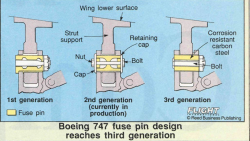Was on Fridays QF442 MEL-SYD A330-3xx service. The APU on the aircraft was U/S and we were relying on ground power. Interesting enough it appears the GPU wasn't able to provide sufficient power and they had to load shed as the power to the seats and various other bits & pieces didn't come to life until we were eventually taxiing. The PIC commented they had to run through a different set of procedures to do an engine start and also ATC through in a runway change for departure prior to pushback.
The load shedding is automatic, and as you can tell, starts with passenger service items. I don’ t know how much power an A330 needs, but normally the 380 is plugged in to three external outlets, and we can use four.
Procedurally it depends upon just how much power you have available. In some cases, you’ll keep most of the fuel pumps turned off until after the start. Like everything else, there is a checklist for it.
I understand that without an APU you need a source of high pressure air to do an engine start at the gate. You push back power up and feed the air from the functioning engine to the start the remaining engine/s. What considerations do you need to take into account when doing an engine start without an APU? I would imagine on a 4 engine aircraft it would be a PITA to work through. What considerations do you need to take into account if you have an engine failure on take-off? Does the lack of an APU make things a little more complicated during cruise, descent and landing? For example you would normally notice an engine get shutdown when taxiing to the gate. Without an APU both engines were functioning until the GPU was plugged in at the arrival gate.
Generally you’ll start one engine (in a twin) at the gate, and the other after completing the pushback. You may need slightly more than idle power to get enough air for the cross bleed start.
In the 380, we’ll start two at the gate (which means we’ll have two generators). After the first is running, the others will start via cross bleed with the engines at idle. You need ATC approval for starts at the gate.
In a quad the APU is shut down immediately after start (with the one exception of sometimes wanting to use its air for air conditioning during takeoff). It’s started again just before we get to the gate. It isn’t normally run in flight, and is limited to about FL200 in any case.
The twins will start the APU after any engine malfunction, as that will restore most of the services. In all aircraft, starting the APU gives more electrical redundancy for low vis ops, and can improve the available category (II to III, or IIIA to B).
The APU is not considered for any engine out on take off case. If you need absolute maximum thrust, which you shouldn’t....the simplest solution is to just turn off the packs. You’re at low level, so the lack of pressurisation won’t matter.















